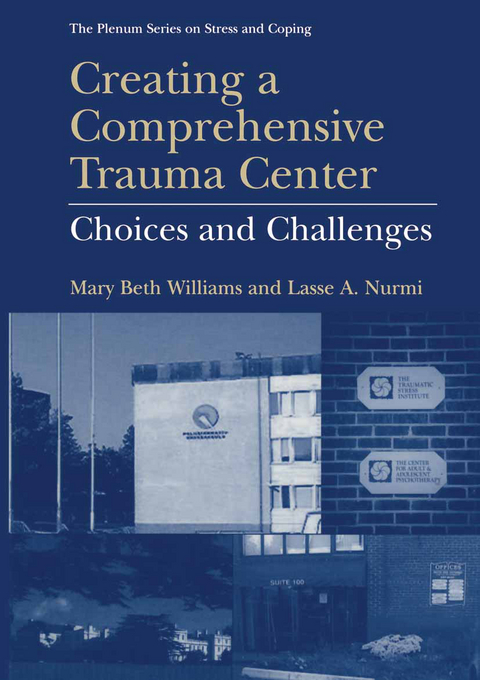
Creating a Comprehensive Trauma Center
Springer-Verlag New York Inc.
978-1-4419-3335-5 (ISBN)
1. The Comprehensive Trauma Center as an Organization: Basic Concepts from Organizational Theory.- 2. The Need for Comprehensive Trauma Centers: The State of Trauma in the World Today.- 3. Privately Developed Trauma Centers in the United States.- 4. Centers with Affiliations and Centers in Progress.- 5. Private and Not-for-Profit Centers around the World.- 6. Nonresidential Affiliated Centers throughout the World.- 7. Centers Specializing in Trauma and the Workplace.- 8. Hospital-Based Trauma Centers.- 9. Centers for Holocaust Survivors and Their Families.- 10. Centers Designed to Work with Refugees.- 11. Trauma Centers for Children.- 12. Government Funded Trauma Centers.- 13. The Experts View of What Trauma Is and How to Treat It.- 14. Trauma Center Directors Describe the Ideal Trauma Center.- 15. Constructing the Ideal Trauma Center: Reflections, Recommendations, and Realities.- 16. The Hamburg Experience: Providing Services in War-Torn Environments.- References.- Appendixes.- I. Terms and Abbreviations.- II. Trauma Centers and Their Addresses.- III. The Research Protocol.
| Erscheint lt. Verlag | 6.12.2010 |
|---|---|
| Reihe/Serie | Springer Series on Stress and Coping |
| Zusatzinfo | XXII, 443 p. |
| Verlagsort | New York, NY |
| Sprache | englisch |
| Maße | 178 x 254 mm |
| Themenwelt | Geisteswissenschaften ► Psychologie ► Klinische Psychologie |
| Geisteswissenschaften ► Psychologie ► Psychoanalyse / Tiefenpsychologie | |
| Geisteswissenschaften ► Psychologie ► Sozialpsychologie | |
| Geisteswissenschaften ► Psychologie ► Traumatherapie | |
| Medizin / Pharmazie ► Medizinische Fachgebiete ► Psychiatrie / Psychotherapie | |
| Studium ► Querschnittsbereiche ► Prävention / Gesundheitsförderung | |
| ISBN-10 | 1-4419-3335-2 / 1441933352 |
| ISBN-13 | 978-1-4419-3335-5 / 9781441933355 |
| Zustand | Neuware |
| Haben Sie eine Frage zum Produkt? |
aus dem Bereich


